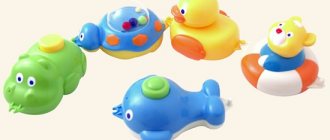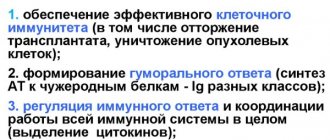Immaturity of the central nervous system
The human brain is a very complex and multi-level structure. All babies are born with an immature nervous system, the processes of inhibition lag far behind the processes of excitation, and the central nervous system finally matures only by 5-6 years.
Have you ever noticed that it is very difficult to put an overexcited baby of absolutely any age to bed?
The babies rub their eyes, yawn, cry, even seem to fall asleep and start crying again. Older children scream and jump on the bed, may cry, throw hysterics, call their parents several times with minor requests, suddenly get scared and scream, but cannot sleep. The reason here is the same as for logoneurosis. This is the immaturity of the central nervous system.
The mechanism of triggering logoneurosis
Logoneurosis is a stuttering familiar to all of us. In world practice, not a single theory of the stuttering mechanism has yet been proven. Most scientists agree that overexcitation of Broca's center in the brain is to blame.
The period of active speech development is a time of enormous stress on the brain and central nervous system. Since in children the central nervous system is already in an insufficiently stable state, additional load can lead to systemic failures, one of which is logoneurosis.
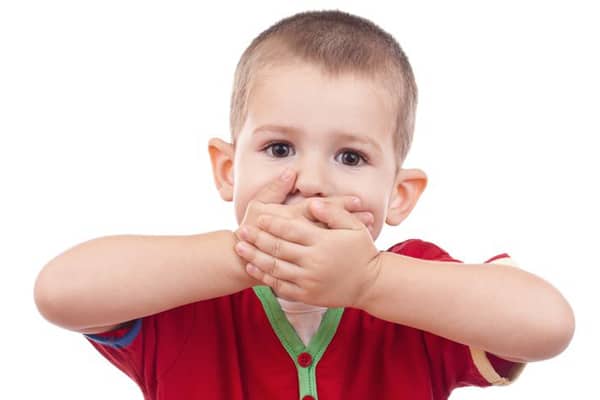
Overexcitation from Broca's center spreads to the areas of the cerebral cortex responsible for movement, this, in turn, causes a spasm of the facial muscles, and the child stutters.
As soon as the overexcitation subsides, the cortex returns to a stable state and speech returns to normal. Logoneurosis comes in different types - one child repeats the ending of a word several times, another stutters on consonants, a third cannot start a phrase.
Causes of delayed speech development
Parents should never worry if their child is silent for a long time ; they should not compare him with other children.
Important! You can only worry when you reach three years of age, but only if the child is sick.
Experts have identified the following reasons for possible violations:
- Problems with the psyche, hearing, prolonged oxygen starvation in the womb. You should carefully monitor the baby’s health, because timely medical care will help resolve everything quickly, without any complications.
- Stress. If there are a lot of quarrels and conflicts in the family, the child may simply withdraw into himself. No one can instill in him the desire to talk in such a society. Therefore, parents also need to monitor the emotional state of the child.
- Lack of communication. Some parents, not wanting to send their child to kindergarten, make a big mistake. After all, for full development, a child must constantly be in society. There he can observe and repeat the words of his peers.
- Excessive parental care. Many of us are ready to guess and fulfill the child’s wishes at the first call, which is fundamentally wrong if you expect consistent speech from the child. He simply has no need to learn to speak, so in such families children utter their first words very late.
- Poor development of fine motor skills. Teach your child to daily evening massage and light finger training, because it is known that the part of the brain responsible for the speech apparatus is inextricably linked with motor skills itself. Drawing and clay modeling will be especially useful. At the same time, you can instill a love of art from early childhood.
- Mixed families speaking different languages. In such an environment, it is very difficult for a child to tune in and grasp the words and their meaning. After all, to do this, he must first choose a language in which he will learn to speak and distinguish the meaning of sentences.
Babies at risk
Stuttering usually develops in preschool children. Most patients of speech therapists, psychologists and neurologists with a similar diagnosis are children 3-4 years old. It is at this age that most parents notice that the child repeats the ending of a word several times. Sometimes the baby stutters not at the end, but repeats the first or one of the middle syllables.
It should be noted that the occurrence of stuttering in adolescence and adulthood is practically not common. People with this disorder make up only 3% of the total number of cases. Of these, the vast majority received logoneurosis due to severe psychological trauma.
Logoneurosis can be corrected quite well, so at the first signs of the disease the child should be shown to a pediatrician. He, in turn, will prescribe a diagnosis from specialized specialists - a neurologist, psychologist and speech therapist - to determine the nature of the disorder and further treatment tactics.
About the disease
Childhood echolalia is a deviation in the formation of speech, in which the child uncontrollably repeats words and expressions from the speech of other people.
Sometimes several times. At the same time, he may not even understand the meaning of what is said.
This phenomenon is typical for a child between one and two years old , when he is just learning to speak and repeats words and phrases after others.
Also, children 3-4 years old often copy the behavior of adults, including in speech. This is also considered a variant of the norm. In this way, the child acquires communication skills.
If echolalia does not go away after 4 years, then this is already considered a deviation and requires correction.
Often the disease is combined with echopraxia (repetition of gestures and facial expressions). The incidence of pathology does not exceed 0.5%.
Such children experience difficulties in social adaptation and the inability to study in a comprehensive school. The most difficult situation is for patients whose echolalia is combined with mental retardation .
Classification of logoneuroses
The World Health Organization developed and adopted the 10th International Classification of Diseases - this is a generally accepted typology of medical diagnoses (hereinafter referred to as ICD-10). According to ICD-10, logoneurosis refers to emotional behavioral disorders that begin in childhood and adolescence, and has code F98.5.
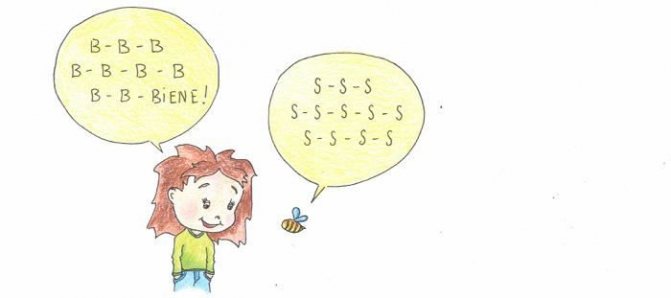
According to clinical signs, logoneuroses are divided into two large groups - neurotic and neurosis-like. It is impossible to determine the type of disease on your own.
Neurotic logoneurosis
This type of disorder occurs as a result of a stressful situation that the child cannot cope with. The compensatory capabilities of the child's psyche are enormous, but not limitless. It is almost impossible to know what specific situation will unsettle your child. Some children are happy to go to fear rooms, ignore their parents’ comments and boldly step into the treatment room. Others don’t sleep at night after seeing Baba Yaga in a book, fight in hysterics at the dentist’s door and withdraw into themselves in response to a short remark from a parent.
We cannot isolate a child from external stress - aggressive classmates, a stern aunt-doctor or a zombie toy looking from a store window on Halloween Eve. But we can create a supportive and open environment at home. The baby should have a safe place where he can vent and cry out his sorrows and troubles. Do not scold your children for the slightest pranks and missteps - it is better to listen to the version of the offender and discuss what the child did wrong and how to avoid it in the future.

Another factor provoking the appearance of neurotic stuttering is early learning of foreign languages. Interestingly, children who initially grow up in a bilingual environment practically do not encounter this type of disorder. But for those who, at the age of active speech formation, are suddenly faced with the need to learn a second language, multiple repetitions of word endings are often observed. And the stress factor in this case plays an important role.
Baby development at 6 months - what mom needs to know
A surge of emotions and movements, variety in nutrition, the first experience of playing while sitting and trying to stand - the sixth month of life is full of new achievements. Little hands are drawn to explore the world with great interest. A baby's development changes a lot at 6 months. But do all children succeed at everything at once, and what do doctors talk about if a child’s skills differ from those demonstrated by their peers? How to help your child show his abilities? With questions about the development of six-month-old children, we turned to first category pediatrician Ekaterina Borisovna Bulavina.
- A child is six months old - this is an age completely different from previous months. Ekaterina Borisovna, what should parents be prepared for, what will their grown-up baby be like?
- In their first 6 months, babies are usually able to roll over well from side to side, from tummy to back and back. They are actively preparing to crawl, without raising their belly, they move forward, right and left, back away, and spin in place. Support on the arms is already well formed, and children can lie on their stomachs for a long time with support on the palms of their straightened arms.
All areas of development: what a child can do at 6 months
| sit and stand |
|
| pick up and spin toys |
|
| show emotions |
|
| babble |
|
| teething |
|
| average height and weight of a child at 6 months |
|

— What kind of developmental delay is considered normal, and when does a child need specialist help?
Physical development
— When assessing the child’s physical condition, the doctor uses the centile method: using special tables, he checks height and weight indicators and determines the corridor in which they are located. Healthy indicators usually fall in the range from the third to the sixth corridor.
If the baby’s height and weight are two or more corridors behind the average, this is a reason to consult a specialist. So, at six months a girl must be taller than 61 cm and weigh at least 6.3 kg, and a boy must be taller than 63 cm and weigh at least 6.6 kg.
If the baby was born prematurely, then doctors estimate the increase in height and weight using special tables depending on the degree of prematurity. Therefore, you should visit a doctor in a timely manner to assess the dynamics of height and weight.
Motor skills and reflexes
— Psychomotor development is assessed by the ability to freely roll over from back to stomach and back, and by the ability to hold one’s body on outstretched arms. The child must master palm grip, that is, be able to hold a toy with both hands, transfer it from hand to hand, and pick it up independently. If your baby has not yet mastered these skills, you should definitely consult a specialist in order to promptly identify the causes of developmental deviations, correctly prescribe treatment or adjust nutrition.
— Is there a difference in the development of boys and girls at six months of age?
— It is believed that girls develop a little faster, but this trend cannot always be observed. Girls can sit down and stand up a little earlier, but not all of them. It depends more on the constitution. Small, thin, active kids progress faster in motor development than slightly lazy, chubby kids.
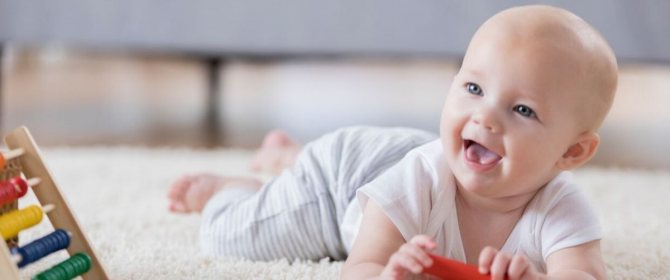
— How to develop a child at 6 months? What games can you start with your baby at this age?
— At six months, a baby actively begins to explore the space of not only his crib, but also the entire room, so activities with a 6-month-old child will be quite varied. To do this, it is worth setting up a safe place for games - a playpen or space on the floor, covered with a special foam mat or blanket.
Do not leave your baby to play on the bed or changing table. There are many injuries and falls at this age, as parents often underestimate the child’s motor abilities.
Toys and games
- You can arrange toys of various textures, shapes and colors so that the baby has to reach for them. This will encourage him to crawl. To improve the function of the hand, you can offer a stick, a ball, or a string.
- Toys should provoke the child to perform simple actions - squeezing, pressing, folding, rotating, moving an object. It’s good if actions are accompanied by sound signals, a pleasant song, the voices of animals, birds, and the sounds of the surrounding world.
- Sorters, pyramids, and cubes are useful for developing coordination. The baby is already good with both hands, so he will quickly master tapping with spoons, putting a smaller object into a larger one, and stringing.
There is no need to buy expensive toys. Children with great pleasure can rustle plastic cups, hit a saucepan with a spoon, and put objects in a box.
- Rattles do not lose their relevance. They can be supplemented with more complex developmental elements, but the essence of the toy remains the same.
- It is better to choose the first books with large pictures made of thick cardboard, vinyl or textiles. E-books supplemented with sound buttons are popular.
- Bathing can be turned into an educational game with the help of rubber toys.
Physical exercise
- Gymnastics is aimed at consolidating acquired skills and preparing for an important stage of development - crawling and sitting independently.
- A set of exercises for arms and legs includes flexion-extension, circular movements in all joints, adduction-extension, patting, “bicycle” and “mill”. Pull-ups by the handles, circular movements of the body, and bending are involved.
- By supporting the baby by the stomach, you can teach him to move his palms across the surface, imitating crawling. Try placing the child on all fours and slightly rocking his body in the anterior-posterior direction.
- Fitball exercises train both the muscular and vestibular apparatus.
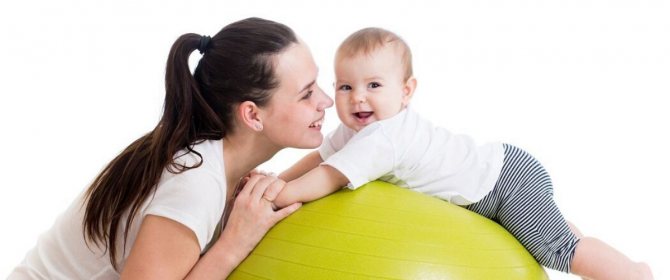
— What development methods are not suitable for a child at the age of six months?
— Parents often want to see a child prodigy in their child almost from the cradle. There are many early development methods, numerous manuals, educational toys - they need to be used, but everything should be in moderation.
You cannot constantly develop your baby and overload him with too intense activities. He should have enough time to just lie down and play for fun.
If a child does not sit at 6 months, many begin to sound the alarm and force him to sit on pillows. This is absolutely impossible to do, since there is an excessive load on the fragile muscles of the back and pelvic bones, provoking the development of severe disorders of the musculoskeletal system.
Also, some parents avoid having their child on the floor, fearing hypothermia, drafts, and debris. But a spacious, safe horizontal surface, covered with a rug or blanket, will become a whole world for the baby, which will give wide freedom of action and movement.
Constantly keeping a child in the confined space of a crib or playpen limits his or her horizons and slows down physical and psychomotor development. Subsequently, such children are often afraid of open spaces.
— Ekaterina Borisovna, what should a child’s menu be like at 6 months so that he grows up healthy?
“Some kids at this age are just starting to try first courses, while others already need to expand their diet. Six months is the deadline for starting complementary feeding. After it, the so-called window of food tolerance closes, when the body is ready to try a new product with the least risk of developing allergic reactions.
A child's diet at 6 months may consist of several types of vegetables and cereals.
- If the child was previously fed gluten-free, dairy-free porridges, then it’s time to introduce milk-based mono- or multi-grain porridge. It is better to start with porridges made with goat milk; they are less allergenic and easier to digest.
- Instead of monocomponent purees, fruit-vegetable and fruit-curd purees are introduced, then the first meat supplement.
- Only vitamin D3 is used as a supplement in a prophylactic or therapeutic dose.
Despite the expansion of the diet, the baby still needs breast milk. Therefore, if there is a shortage, the doctor may prescribe supplementary feeding in the form of an adapted milk formula or completely transfer the baby to artificial feeding. As a first formula, a healthy child without signs of allergies can be prescribed a second-stage formula based on goat's milk, for example, MAMAKO Premium®.
— How much should a child eat at 6 months?
— If complementary foods are introduced early, then at six months the baby should eat on average:
- 150 g porridge
- 150 g vegetable puree
- 60 g fruit puree
- 5-30 g meat puree
- 150-200 ml breast milk or formula
The baby receives breast milk on demand after complementary foods. The mixture is also given after the main course, but its volume should be significantly less than the usual portion. For example, the usual portion of food for a single feeding does not exceed 200 g. If the baby received 150 g of puree, then the mixture is diluted with no more than 50 g. The numbers are very arbitrary, everyone’s appetite and needs are different, and if your child eats a little less or a little more than normal , then there is no need to worry. But there is no need to overfeed, the child does not need excess weight.

— What should you not feed six-month-old children?
- It is strictly forbidden to give whole cow's or whole goat's milk, natural or packaged juices. Products intended for feeding adults or older children are prohibited (non-homogeneous soups, pieces of vegetables, minced meat); all food must have a puree-like consistency. Products containing flavors, dyes, preservatives, various spices, salt and sugar are also excluded. There is no need to rush into introducing fish and fermented milk products (kefir, yogurt) into your baby’s diet, but cottage cheese can be given at six months according to indications.
— Is the development of six-month-old children on breastfeeding and on artificial feeding similar or has characteristic features?
No significant differences in the development of breastfed and bottle-fed children were found. Modern formulas of infant formula are as close as possible to the composition of breast milk and contain all the necessary components for full development. But only a high-quality formula, selected by a doctor taking into account the individual characteristics of the baby, can become an alternative to breastfeeding and will help avoid digestive problems, allergies, and colic.
— As the first formula for healthy children without signs of allergies, and especially for babies who have relatives with intolerance to cow's milk protein, it is preferable to prescribe a formula based on goat's milk. The choice can be made in favor of the MAMAKO Premium® mixture.
Goat's milk, unlike cow's milk, is less allergenic, since it does not contain the complex protein alpha-s1-casein, which is responsible for allergies. In addition, the recommended mixture contains many beneficial nutrients, including:
- a unique IQ complex with Omega-3 and Omega-6 polyunsaturated fatty acids in an optimal ratio and lutein for the proper development of vision and brain;
- L-carnitine, which ensures proper metabolism and promotes muscle growth, which is especially necessary for a baby at six months, as his motor activity expands;
- nucleotides that provide an adequate immune response;
- a vitamin and mineral complex that fully meets the age-related needs of the baby.
A six month old baby is very different from a newborn, both physically and emotionally. He easily turns over, tries to crawl on his bellies, learns to sit and stand up against a support, is equally good with both arms and can manipulate several objects at the same time. But most importantly, the baby can already evaluate the results of his actions and consciously repeats them. He knows his name well and reacts to it with emotional revival. During this period, it is important to continue massage and gymnastics, talk a lot with the baby, allow him to play on the floor not only with toys, but also with household items, and take a lot of walks. The baby should definitely try complementary foods if they have not been introduced before. Do not forget about timely visits to the pediatrician.
Pediatrician Ekaterina Borisovna Bulavina
*The ideal food for an infant is mother's milk. WHO recommends exclusive breastfeeding for the first 6 months. MAMAKO® supports this recommendation. Before introducing new foods into your baby’s diet, consult a specialist.
Neurosis-like stuttering
Unlike the first type of disorder, which occurs against the background of psychological trauma or stress and does not affect the actual structures of the brain, neurosis-like stuttering is only a symptom, while the source of the problem is in the damaged area of the cortex.
The cause of neurosis-like stuttering usually lies in a difficult pregnancy and birth injuries. During intrauterine hypoxia, the part of the brain responsible for speech is often damaged.
The problem becomes noticeable by the age of three, when the child begins to speak in sentences. Periods of stuttering are replaced by times of clear speech. The disease progresses in waves, with phases without stuttering becoming shorter and shorter and eventually disappearing completely.
A 3-year-old child speaks poorly: what to do?
It is necessary to sound the alarm (the child has a clear delay in speech development) if by the age of three the child:
- A sufficiently developed speech apparatus has not been formed.
- There is no use of common phrases.
- There is no good speaking (the pronunciation of hissing, whistling, soft and hard sounds is impaired), incorrectly pronounces sounds similar in pronunciation S and Sh, Z and Zh, Ch and Shch, syllables are skipped, rearranged, replaced in words, poor vocabulary, only monosyllabic ones are used words, words incorrectly agree by gender, case and number.
- There is no ability to read aloud, recite poetry or sing by heart, and there are no signs of mental retardation.
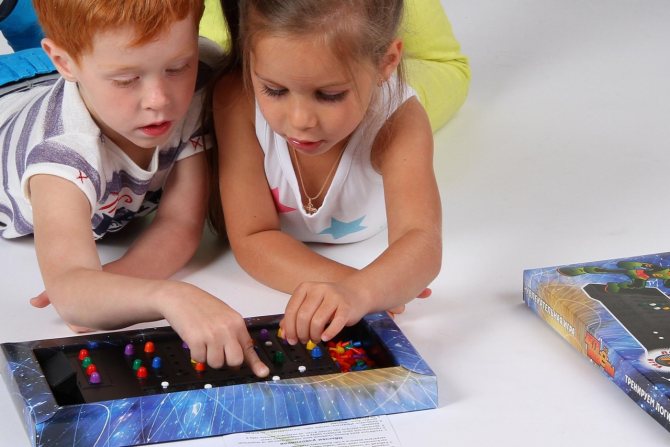
Playing together with children
The main actions of parents in this case are as follows:
- Start actively talking with the silent person. It is necessary to voice all your actions, involving the child in the communication process. At the same time, you should listen and understand, react to his babble, and unravel his intonation. This encourages your baby to further develop his communication skills.
- Involve in active games. The adult’s task is to give the child not only physical food for the child, but also emotional “food” for the mind. The baby himself, due to his age, is not yet capable of this. Simple toys (balls, pyramids, games (hide and seek, catch-up)) are necessary for a child at an early age for his full development, and they should not be underestimated. And here the most important thing is that the interaction takes place between an adult and a child not in silence, but with the spoken actions being performed, so that the child’s brain creates stable connections between words and actions.
- Reading aloud together. Fairy tales with interesting and easy-to-understand plots and bright illustrations, funny songs and rhymes, read aloud or by heart, enrich vocabulary. While reading, you should talk through what is happening, describe the characters, illustrations, addressing the baby, involving him in communication.
- Communication with peers. It is possible that the child lacks communication with other children. The baby may be timid and passive by nature. In this case, parents should take the initiative, involve the child in joint games with other children, walk with him on playgrounds where he can meet his peers, organize events at home to which friends, neighbors, and relatives are invited with their children . All this is extremely necessary for the child to learn to communicate, so that he has the need to express his desires through words.
- Development of fine motor skills. The area of the brain responsible for precise finger movements is located next to the speech center, so the development of motor skills helps to overcome the lag. To improve fine motor skills, you can assemble puzzles, sculpt from plasticine, tie shoelaces, and fasten buttons.
Speech therapy exercises for speech development in children from 3 to 4 years old
Note! Communication and joint reading aloud should take place in a friendly and welcoming atmosphere. Only in this case will all these actions help achieve the desired goal (to develop the baby’s speech skills and overcome developmental delays).
Diagnostics
So, the parents noticed that the child repeated the ending of the word several times. Which doctor should I contact? If the problem is only in endings, and the baby has not reached the age of two years, perhaps he does not suffer from logoneurosis, but is just practicing the pronunciation of individual sounds and words. The problem of pathological stuttering can easily be noticed by a mother or any other adult caring for a child. When stuttering, you may notice a spasm of the facial muscles, which prevents the child from finishing a word or phrase.
If any speech problems arise, the child should definitely be shown to a specialist - the sooner treatment is started, the greater the likelihood that he will completely get rid of the problem.

Diagnosis will require examination by a number of specialists - a pediatrician, neurologist, psychologist and speech therapist. It may be necessary to conduct an EEG if the disease is acute and there is a suspicion of neurosis-like stuttering.
What to do?
If a child repeats the endings of words, this should not be treated as pampering. Scolding and considering this a deliberate antics is wrong. It is necessary to visit a specialist who will help you understand the causes of the current condition and also find ways to solve the problem.
Which doctor you contact depends on what caused the pathology, usually it is:
- speech therapist It will help the child in the formation of clear and competent articulation of all sounds, mastering the technique of proper breathing and control of his own voice, as well as the speech apparatus in general;
- psychotherapist _ If there is a traumatic situation, or the child has suffered some kind of stress previously, the doctor, using modern techniques, will help get rid of the consequences of such an event;
- neurologist _ The task of this specialist is to select medications. The most commonly prescribed drugs are sedatives and antispasmodics, as well as drugs that improve cerebral circulation.
In addition, it is necessary to: normalize the child’s work and rest schedule, reduce the overall level of stress, master physical therapy and special breathing exercises, take soothing decoctions and herbal infusions.
Sometimes, in order to understand the situation in the family, not only the person suffering from a speech disorder, but also his relatives have to turn to a psychologist.
Therapy
Logoneurosis requires labor-intensive, long-term treatment from a number of specialists (taking sedatives, almost daily sessions with a speech therapist, therapy with a child psychologist or neuropsychiatrist).
Today, there are many different methods for treating logoneurosis in children, each of which, individually or in combination with other types of therapy, gives a lasting and visible result.
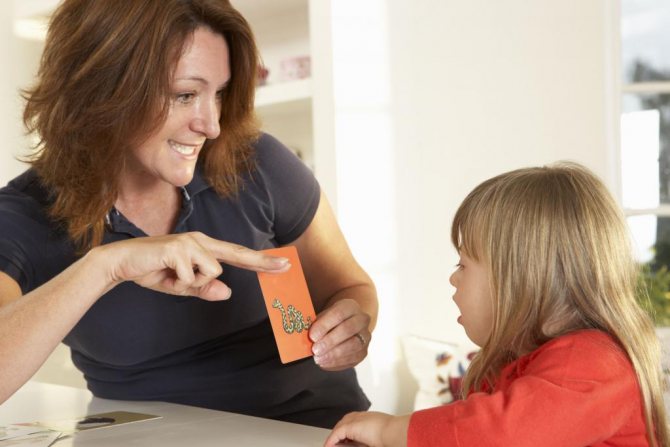
After all, the fact that a child repeats the ending of a word several times is just the tip of the iceberg. The root cause lies much deeper - in a traumatic memory, constantly suppressed difficult emotions or organic damage to a part of the brain. Both the first and second, and especially the third, require the work and supervision of a specialized specialist.
How to alleviate the child's condition?
Many parents complain that the treatment is carried out in full, but there is no relief. The child both stuttered and stutters. Parents lose patience, get angry, and suspect the child of deception. The child, in turn, becomes nervous, logoneurosis worsens, and instead of effective therapy, the result is walking in a vicious circle.
Parents of a child with logoneurosis should remember that even the most modern treatment methods and medications will not help if a traumatic environment persists at home. Therefore, experts recommend organizing a security regime that includes several measures:
- Confidential and calm environment. The more confident the baby feels, the clearer his speech.
- Clear daily routine. Going to bed in a timely manner will help avoid overwork and relieve stress on the central nervous system.
- Restriction or complete ban on the use of gadgets and viewing media programs. In a child with logoneurosis, excitation of the central nervous system already predominates over inhibition; the brain and nervous system must not be overloaded with additional stimuli.
- Emphasis on fine motor skills and solo play.
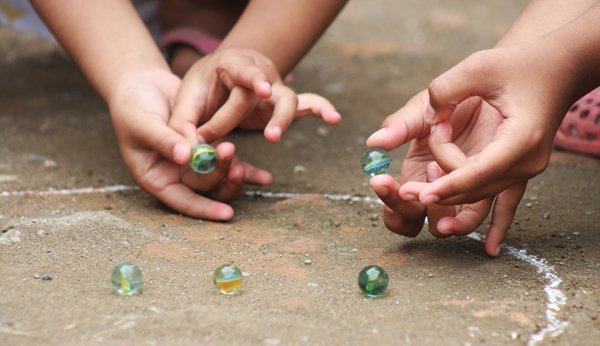
The vast majority of children do not stutter when they play with themselves; this strengthens their self-confidence and relieves possible nervousness when communicating with peers. Fine motor skills are inextricably linked with speech development. Both points are very important in the treatment of logoneurosis.
In the article we found out in detail what logoneurosis in children is. This is a stuttering of one developmental nature or another, which must be treated strictly under the supervision of a specialist. With timely initiation of treatment, the prognosis is favorable.
How to teach a child to speak before one year old
The development of speech in children under one year of age occurs in the complex development of the whole organism. A newborn has only a set of reflexes that gradually develop and turn him into a full-fledged personality. Speech is one of the important criteria for development. It is the result of coordinated activity of the brain, and the brain develops thanks to the activity of a child exploring the world in the first months of his life.
To speed things up, you can listen to the following tips:
- Talk constantly. From the first minutes, children absorb information about what they see and hear around them. Their hearing is already fully formed. You can talk about anything - what you dress him in, where you go, comment on any little things. Activities that accompany conversation promote faster understanding. After some time, the baby will be able to understand what they want from him.
- Repeat after your child. Usually children, even at such a tender age, try to say something. Often it resembles an endless repetition of one sound. This is how the baby trains diction. It would be great if his parents repeated after him. You can complicate the task by singing the familiar “zya-zya-zya” to the child. This way the baby will learn to keep the pace, which will also be useful for him in the further development of speech.
- Animal sounds. When your child communicates with animals, show what sounds these animals make. Is there a cat in the house? The child will quickly learn that she says “meow.” When the speech apparatus is sufficiently formed, the child will even be able to call the cat with the standard “kitty-kitty.” It’s even more interesting with dogs, as they are more friendly by nature. If there are no animals, you can reinforce the sounds with pictures;
- Train your baby's fine motor skills. Surely you have noticed that little children want to touch, grab, and crush everything? This is no accident. This is how the brain develops. By allowing your baby to play with cereals, sand, buttons and beads, you are doing him a good service, including accelerating the acquisition of speech. Naturally, all these exercises must be done under the supervision of parents, so that the inquisitive baby does not start eating sand or stuffing buttons into his nose.
- Organize communication with other children. Children can communicate with each other even more actively than with adults. They share their experiences, although often it looks like babble. If there are children in the company who already know how to speak, most likely the baby will imitate them. In addition, when playing with other children, the child gets pleasure, which is important for his development.
- Use sign language in doses.
It is easier for a child to show what he wants than to say. If this can even help right away (for example, when a baby points to a package of juice and the mother comments on what the juice is called), then in the future it is better to get the child to name the object.

Even with all this effort, you shouldn’t expect your baby to be quoting War and Peace by his first birthday. Usually the children with whom they work speak earlier, but in the same “gibberish.” Approach everything without fanaticism. Everyone has their own pace of development. The main thing is the health and well-being of the baby.
Constant training
Constant training is important for the development of the speech apparatus. That is why, during any interaction with a child, it is important to comment on what is happening. You can tell your baby about everything that is happening around. The more often the described actions are repeated, the faster the child will remember individual words, and then phrases. He most likely won’t be able to speak them yet, but he will understand.
For speech training to be successful, you need to follow some recommendations:
- Strike a balance between saying too much and too little. It is important to focus on one or two words.
- Highlight the names of objects and the actions that happen to them. Sentences should be short but meaningful.
- Talk about an object when the child has it in front of his eyes, or some action is performed with it.
- Read poems more often, but only emotionally and maintaining rhythm. The more emotionally you speak, the easier it is for the child to pay attention to the speech, and therefore to assimilate it.
- Use gesture games when talking and counting rhymes with clapping. Children after 6 months perceive them well.
- It is advisable to talk face to face. The baby follows the movement of his lips, remembering articulation and intonation.
- Ask questions. Even a simple question about whether you like the toy will do. The main thing is to wait for the reaction. It can be in any form - grumbling, smiling, even crying. If the baby enters into a dialogue, he needs to be motivated - praised, smiled, kissed.
You need to be in constant contact with your baby. Regular and systematic communication is the best way to speed up the development of his speech.
Expand your passive vocabulary
The child does not yet have an active vocabulary, because the baby simply does not know how to speak. But he can already recognize those things that he sees and uses every day. Of course, provided that parents use the tips described above.
A few more features of the passive dictionary extension:
- Regularly conduct “tours” of the house . If household items are familiar to you, then all this is new to your child. A regular TV remote can take several hours to use. Walk around the house with your baby, naming objects. For example, close and open the doors, turn the lights on and off, boil the kettle. These are everyday activities, but they will be very interesting for the baby, who will be able to learn many new words along the way.
- While walking on the street, show your little fellow traveler trees, benches, pine cones, a fountain, a house, and even an urn . The more objects he sees, the better.
- Name the parts of the body . The game will help the baby learn where his hands are, where his legs are, what kind of nose he has, etc. When the main elements of the face and body have been studied, you can tell what they are like - blue/green/brown eyes, long/short/straight/curly hair.
- Use games . For example, The world in the palm of your hand or We speak from the cradle. With the help of educational materials, your baby will speak much faster.
The expansion of passive vocabulary can be supplemented by looking at different pictures. The brighter and more interesting the pictures, the better.
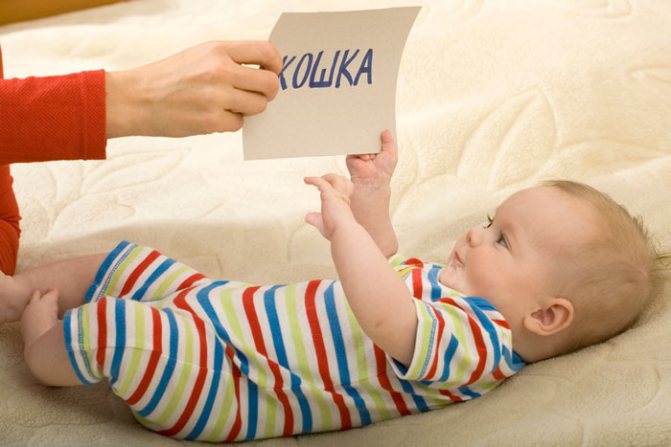
Use simplified words
Babies cannot speak complex words. Their maximum is “ba ba ba,” that is, monosyllabic, frequently repeated constructions. If you want your child to learn to speak faster, it is better to name objects in the same simple words.
For example:
- dog - woof-woof;
- rain - drip-drip;
- goat - be-be;
- bell - ding-ding.
This simplification will not be excessive. For a child, simple words are the norm. Having learned them, the child will more actively develop speech. Their regular use will help prepare for more complex speech structures. Up to one and a half years, the introduction of simplified words is acceptable.
But it’s important not to overdo it here. Communicating with a child exclusively in simplified words will do more harm than good. It is better to use the full and simplified form of the word so that in the future the child can painlessly switch to standard speech. Retraining is too difficult a process.
https://youtube.com/watch?v=SFvwNmeqvIo
Roll calls
To teach a child roll calls, you need to know what sounds he already knows and likes to pronounce. Parents, as a rule, know all this, given that, having heard a new sound they like, the baby can repeat it for hours.
Knowing these syllables, say them in front of your child several times. Usually the baby reacts and begins to babble after the parent. If the child babbles on his own, repeat the new syllable after him. This way he will understand that you are reacting.
Then change the sounds and syllables yourself. The baby, having understood the essence of the game, will repeat sounds that are new to him. He may not succeed right away, but in any case, children really like such roll calls.
You can play roll call even if parents and children are in different rooms. The main thing is to pronounce the sounds loud enough. And there is no need to be distracted from everyday household chores. But there is advice - one lesson = one new syllable. At each roll call, syllables already learned can be repeated. And to maintain the child’s interest, it is worth using roll calls in poetic form.
For example, you've probably heard:
Geese, geese! Ga-ha-ha
Do you want to eat? Yes Yes Yes.
Development of fine motor skills of hands
Speech development in infants is influenced by games that involve fine motor skills. Scientists have long proven the relationship between fine motor skills and children’s ability to speak. The sooner the baby starts doing exercises to develop fine motor skills, the faster he will speak. The motor and speech centers of the brain are located nearby, and stimulation of one affects the functioning of the other.
Eastern practices say that there are points on the palms, the stimulation of which can affect the entire body. That is why you can do exercises with your baby’s fingers almost from birth.
But it is important to follow the following rules:
- You need to practice every day, devoting at least 2-3 minutes. More may not work, especially with very young children who sleep a lot and eat while they are not sleeping.
- It is better to choose the time to play while the baby is in a good mood;
- Be sure to praise the baby.
- The props used for games must be clean and safe. Kids may well taste an interesting little thing, and this should not cause allergic reactions or more serious problems.
- For the game it is better to use objects of different sizes and textures. They should differ in grip options so that kids learn to turn their hands in different directions.
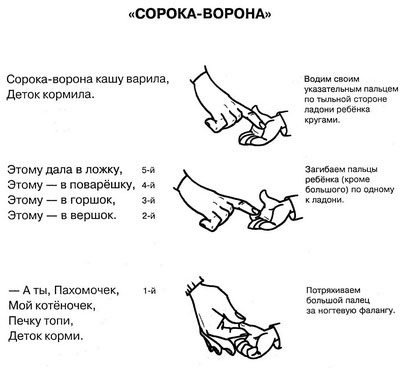
You can massage your fingers, use a variety of rattles with a massage effect. Or buy toys that start singing or glowing after you press some buttons. If the toy also speaks, that’s great. But this accessory is suitable for children who are more than six months old.


